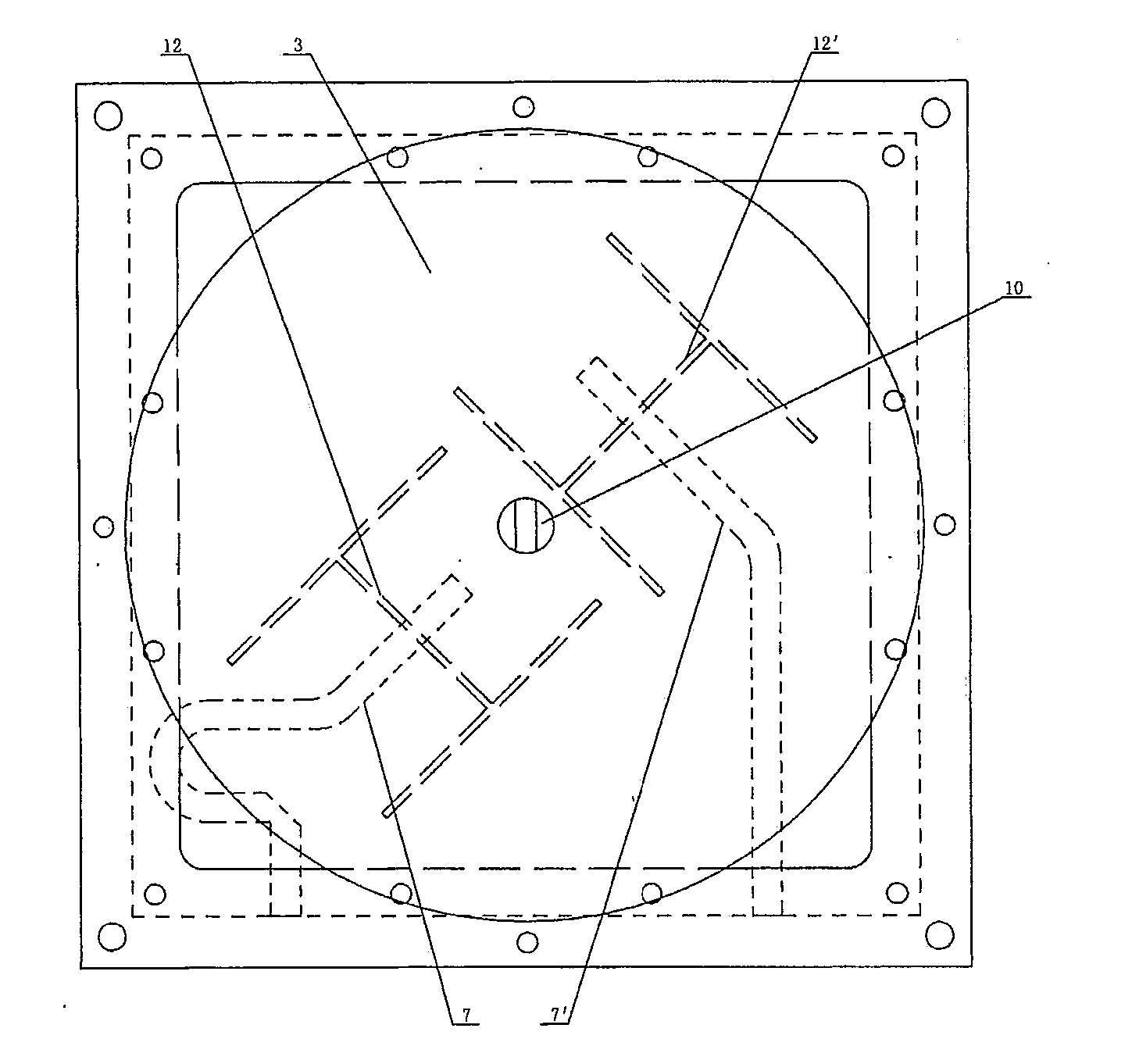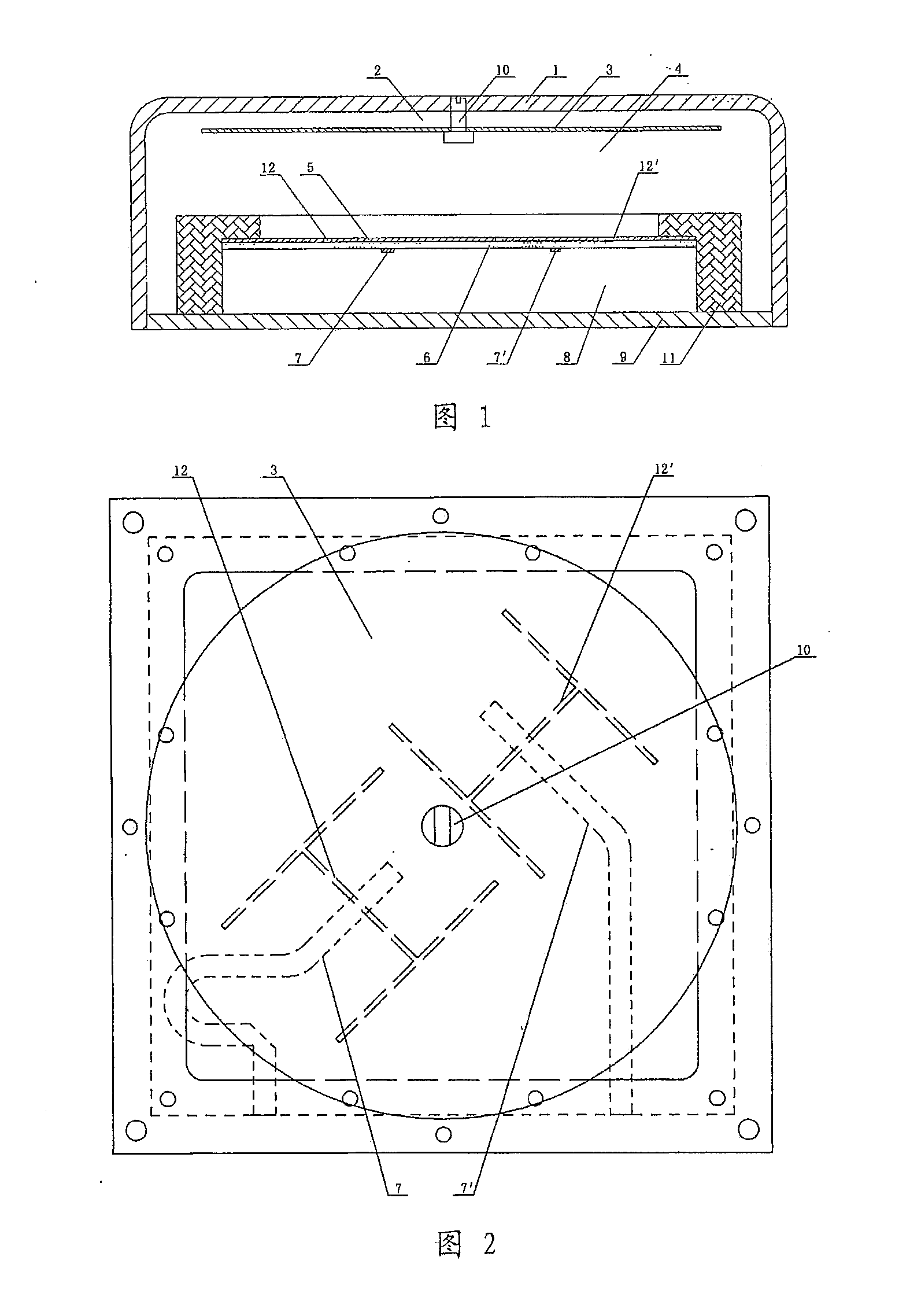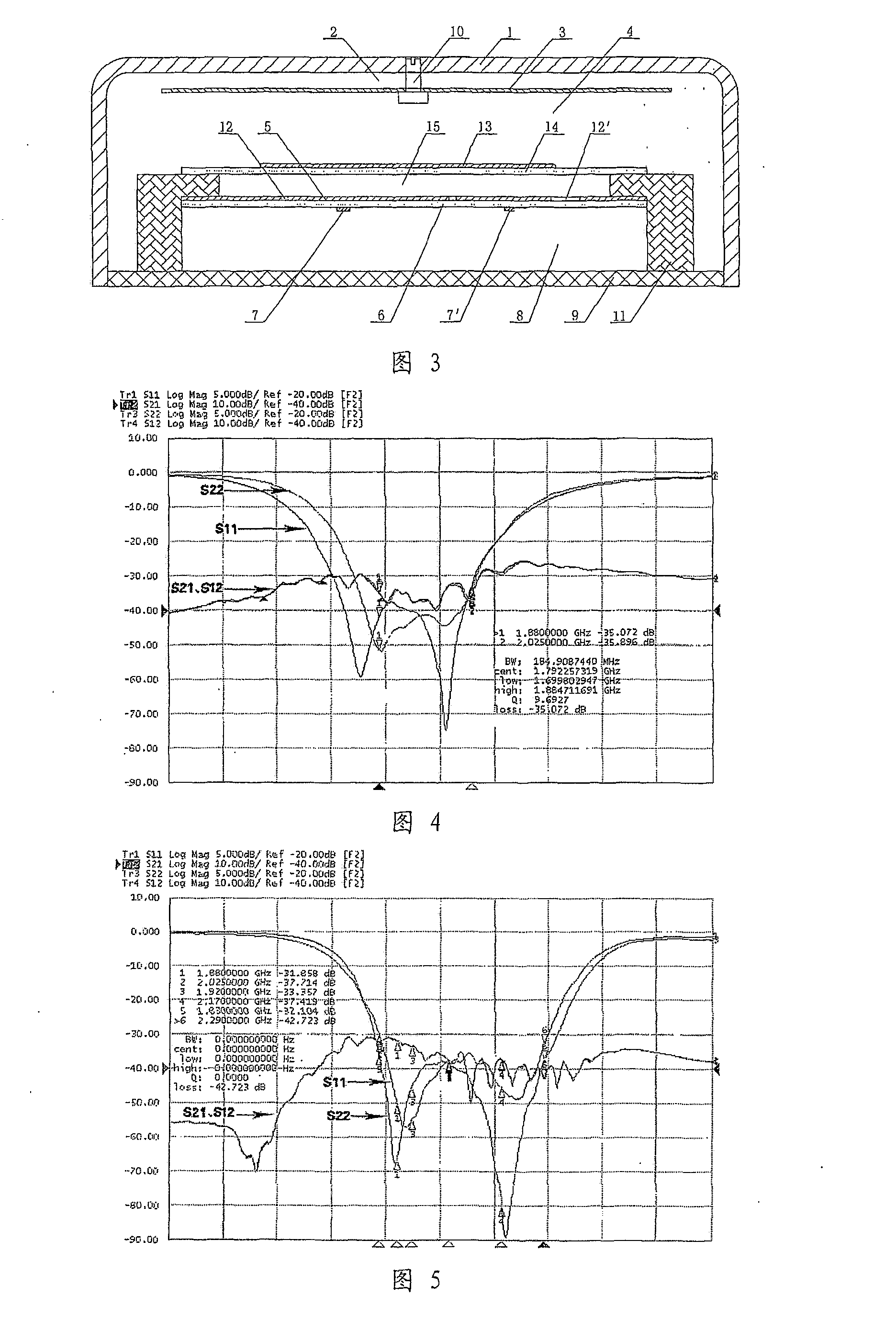Dual-Polarized Microstrip Antenna
a microstrip antenna and microstrip technology, applied in the field of antennas, can solve the problems of low work efficiency, low work efficiency, low vertical hpbw, low gain, etc., and achieve the effect of effectively expanding the frequency bandwidth of the antenna, excellent polarization isolation, and small area
- Summary
- Abstract
- Description
- Claims
- Application Information
AI Technical Summary
Benefits of technology
Problems solved by technology
Method used
Image
Examples
embodiment 1
l-Polarized Antenna
[0127]FIG. 1 and FIG. 2 show a small microwave low-band multi-frequency high-gain dual-polarized microstrip antenna according to this embodiment (a TD-SCDMA dual-polarized antenna; TD-SCDMA frequencies of CMCC under a 3G license: 1,880-1,920 MHz and 2,010-2,025 MHz), wherein a first air dielectric layer 2, a first metal radiating patch 3, a second air dielectric layer 4, a ground metal patch 5, a first dielectric substrate 6, bipolar excitation microstrip lines 7, 7′, a third air dielectric layer 8 and a metal reflection baseplate 9 are sequentially arranged in an antenna cover 1 from top to bottom. The first metal radiating patch 3 is connected with the antenna cover 1 through a screw 10. The ground metal patch 5 covers the upper end surface of the first dielectric substrate 6, and is fixedly connected with a hollow metal support 11 which is fixed on the metal reflection baseplate 9. The bipolar excitation microstrip lines 7, of which the front ends are orthogona...
embodiment 2
TD-LTE Antenna
[0131]FIG. 3 shows a small microwave low-band multi-frequency high-gain dual-polarized microstrip antenna according to this embodiment (coverage: TD-SCDMA and TD-LITE frequencies; WCDMA frequencies: 1,920-1,980 MHz and 2,110-2,170 MHz; TD-SCDMA frequencies: 1,880-1,920 MHz and 2,010-2,025 MHz), which is based on Embodiment 1 and further includes a second metal radiating patch 13 and a second dielectric substrate 14 in the second air dielectric layer 4. The lower end surface of the second metal radiating patch 13 is jointed with the upper end surface of the second dielectric substrate 14 to form as a whole, which is then fixedly connected with the hollow metal support 11 fixed on the metal reflection baseplate 9 to form a fourth air dielectric layer 15 below the second dielectric substrate 14. This configuration helps further enlarge the working frequency bandwidth of the antenna. The second metal radiating patch 13 is circular, so that the VSWR at the I / O port of the a...
embodiment 3
olarized Microstrip Antenna with Three Metal Radiating Patches
[0134]FIG. 6 shows a small dual-polarized microstrip antenna with three metal radiating patches based on Embodiment 2, in which a third metal radiating patch 18 and a third dielectric substrate 17 are further arranged between the second metal radiating patch 13 and the first metal radiating patch 3. The third metal radiating patch 18 is parallel to the first metal radiating patch 3 and insulated from the second metal radiating patch 13 and the hollow metal support 11. The lower end surface of the third metal radiating patch 18 is jointed with the upper end surface of the third dielectric substrate 17 to form as a whole, which is then fixedly connected with an insulation support 19 fixed on the second dielectric substrate 14 to form a fifth air dielectric layer 16 below the third dielectric substrate 17.
[0135]Test results prove that the working bandwidth of the antenna according to Embodiment 3 is further enlarged without ...
PUM
 Login to View More
Login to View More Abstract
Description
Claims
Application Information
 Login to View More
Login to View More - R&D
- Intellectual Property
- Life Sciences
- Materials
- Tech Scout
- Unparalleled Data Quality
- Higher Quality Content
- 60% Fewer Hallucinations
Browse by: Latest US Patents, China's latest patents, Technical Efficacy Thesaurus, Application Domain, Technology Topic, Popular Technical Reports.
© 2025 PatSnap. All rights reserved.Legal|Privacy policy|Modern Slavery Act Transparency Statement|Sitemap|About US| Contact US: help@patsnap.com



